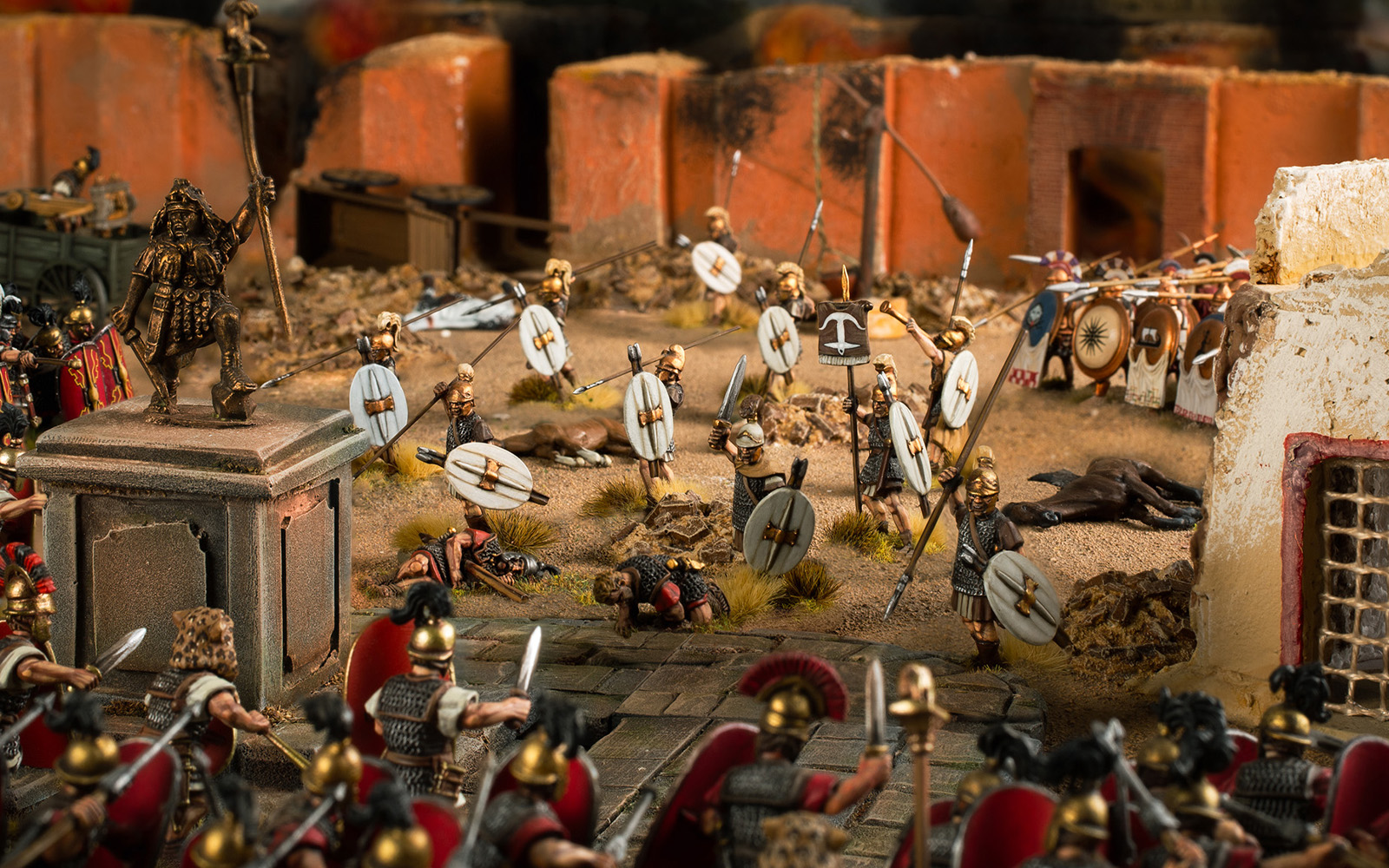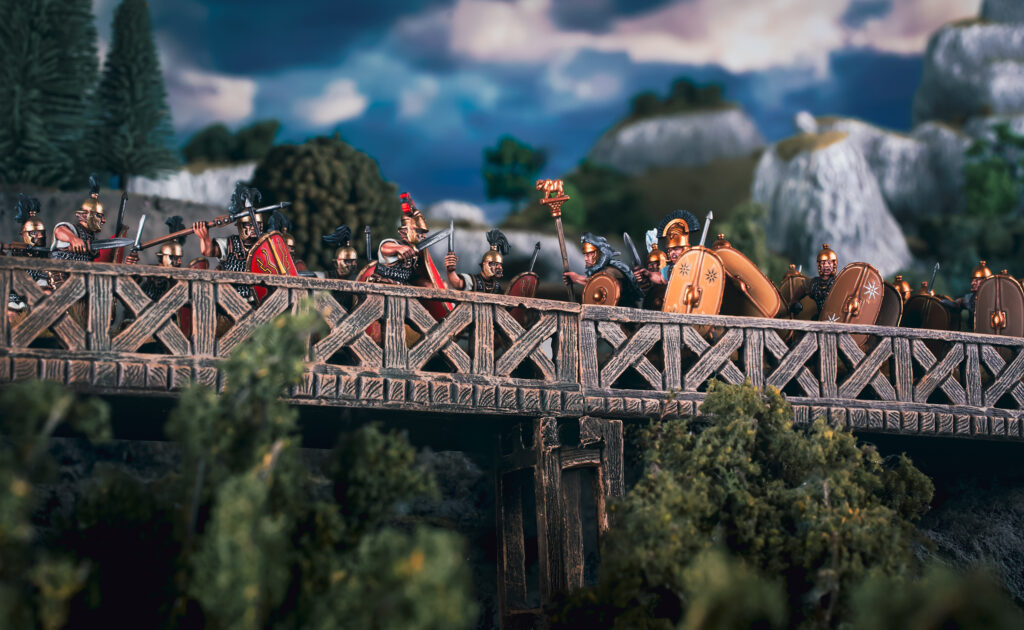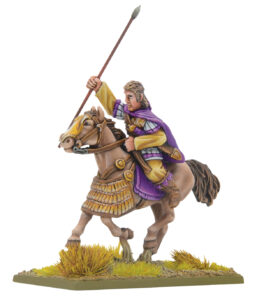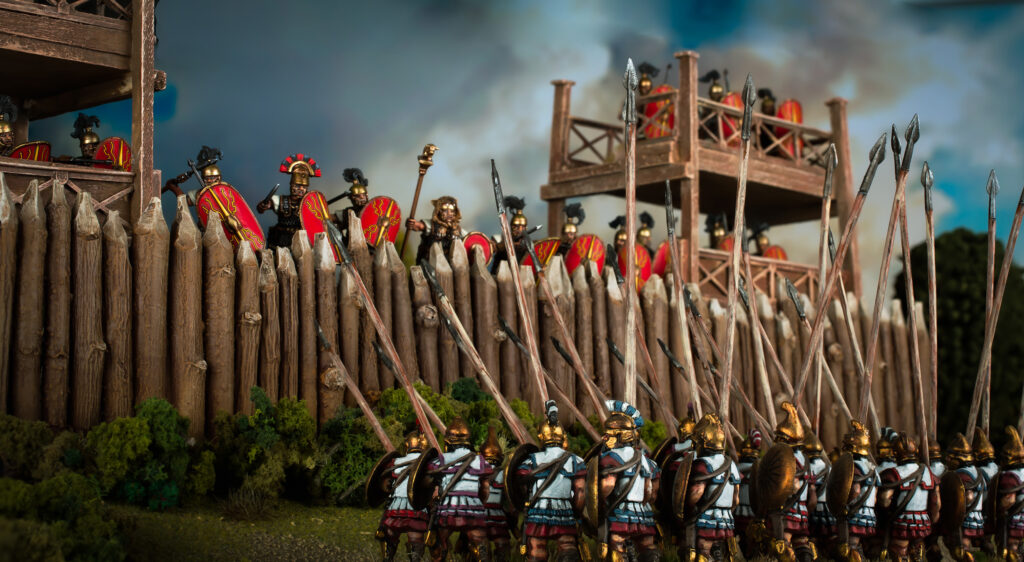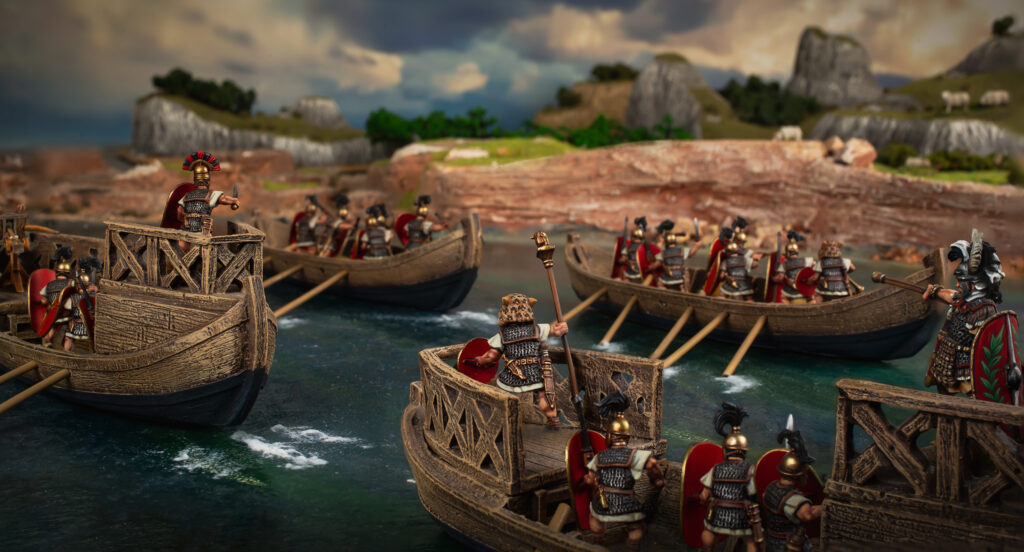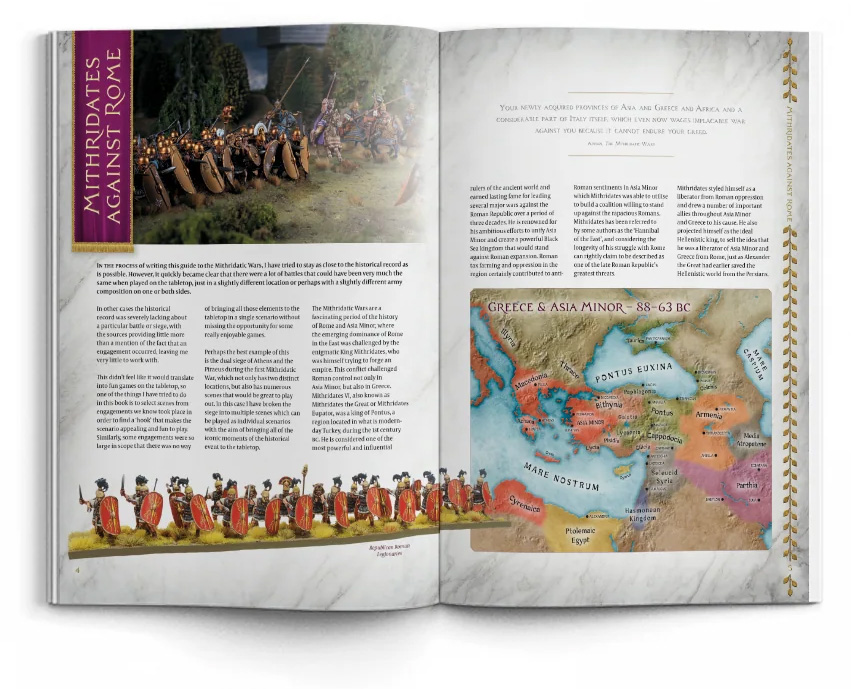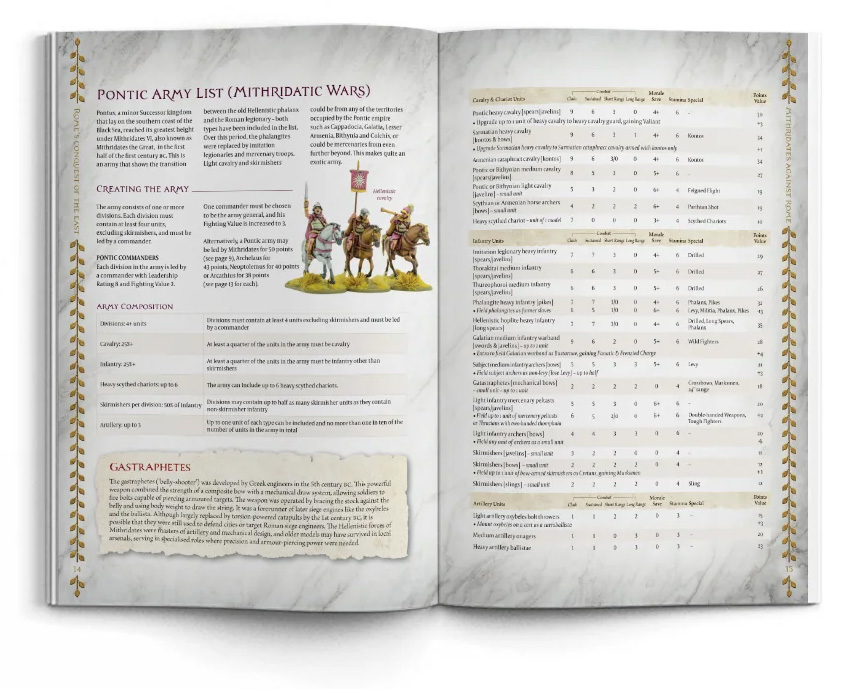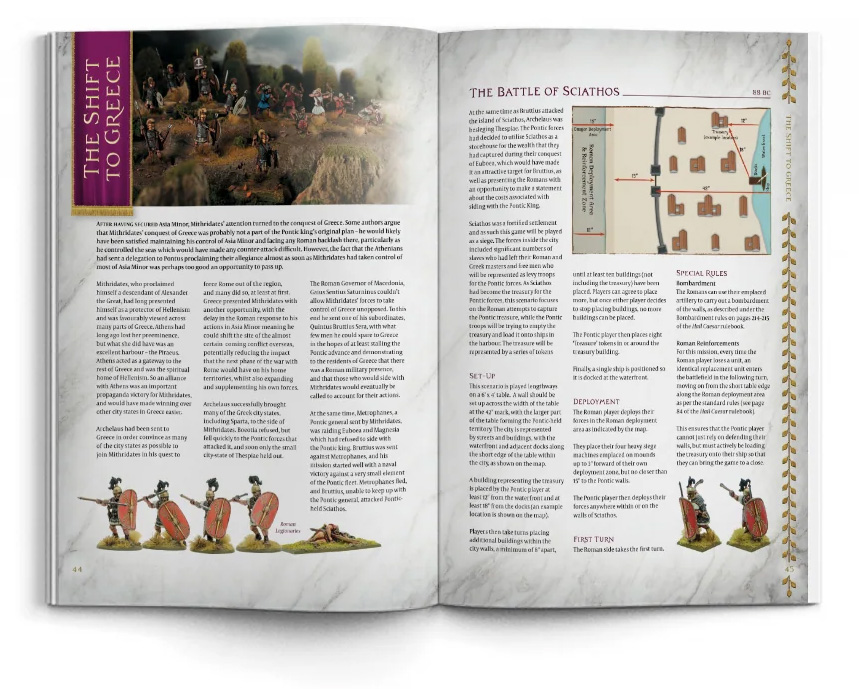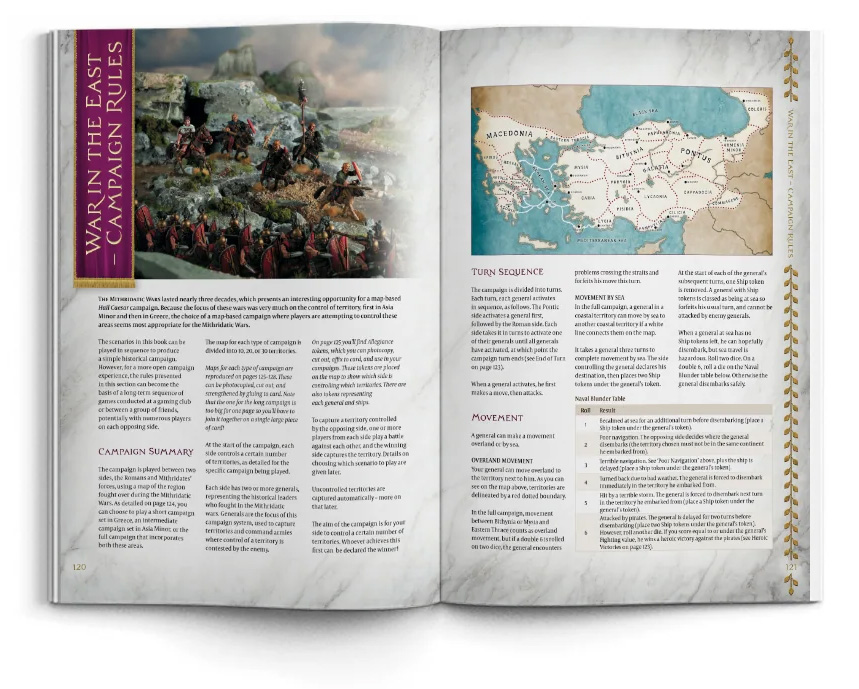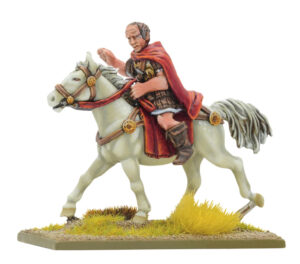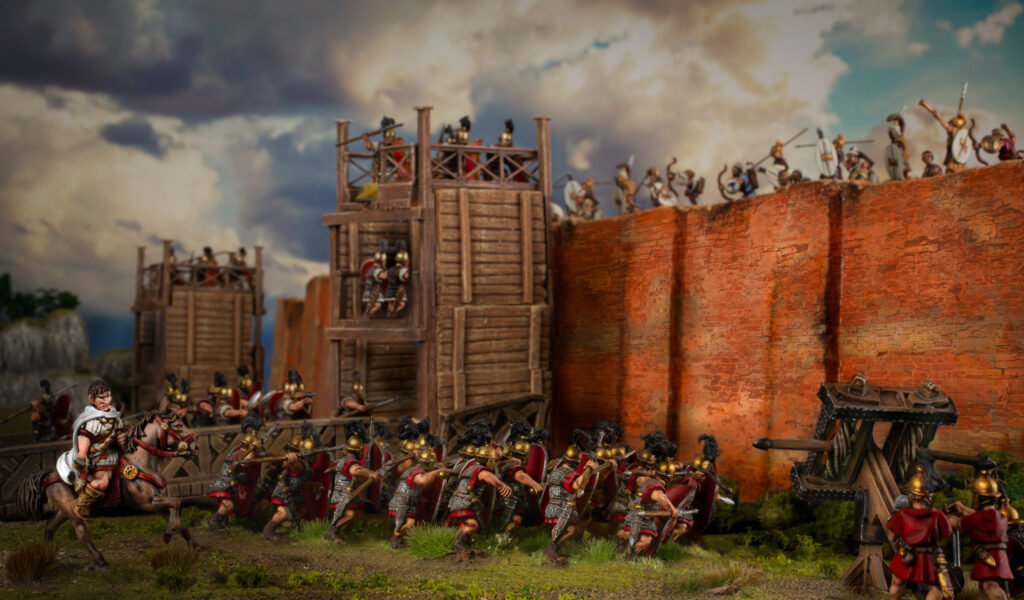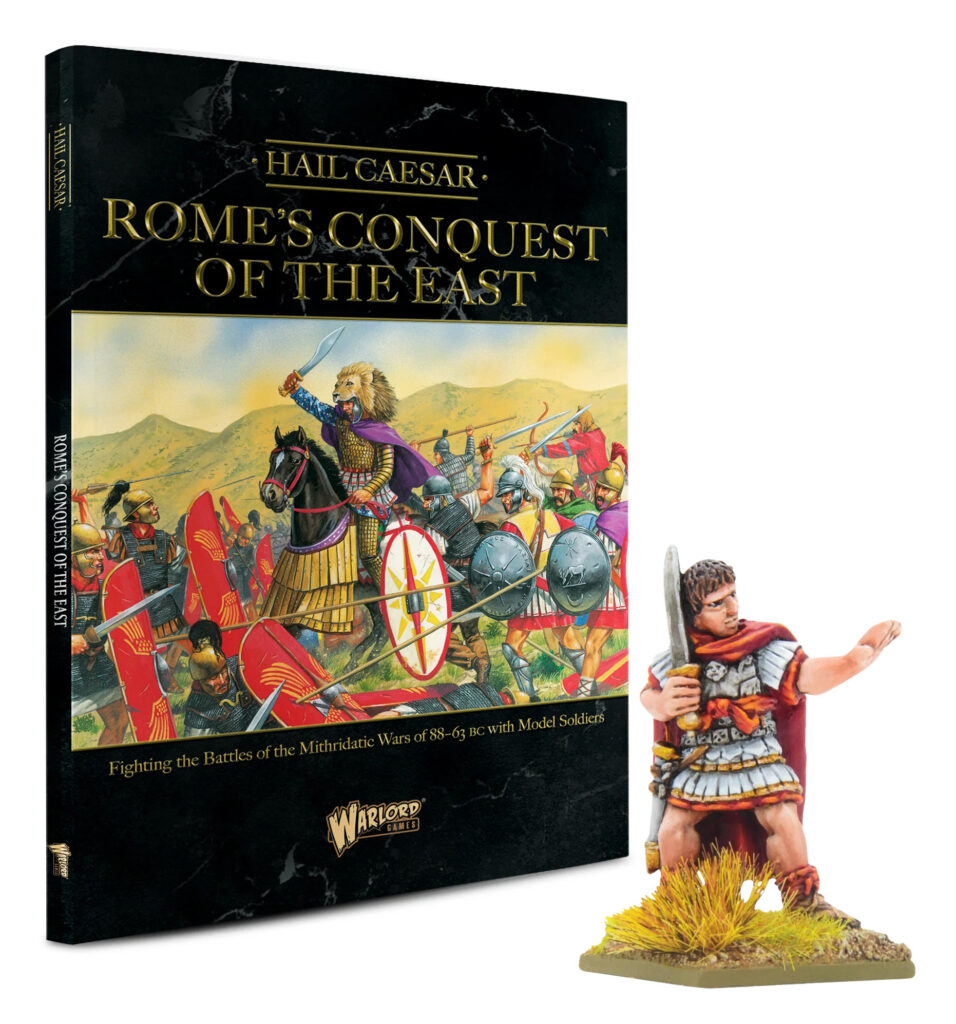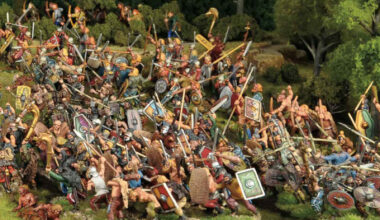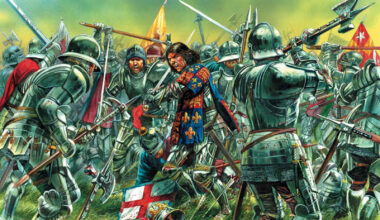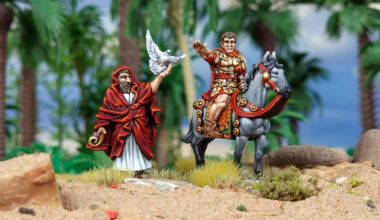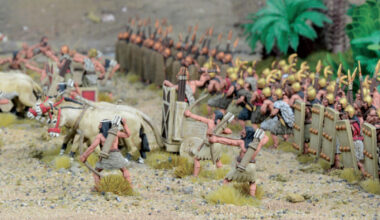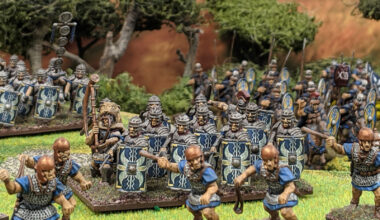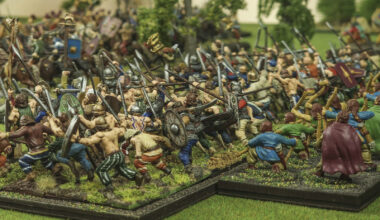Rome’s Conquest of the East is on pre-order now, and we asked Michael ‘Maxx’ Schmitz, the author of this fabulous new supplement for Hail Caesar to discuss the philosophy behind the design, how one goes about researching and writing about Ancients, and why the Mithridatic Wars are so cool.
I’ve been a gamer since I was about twelve, and I’ve loved history ever since I first swung a sword and started studying the people I was recreating as a historical reenactor. When someone told me I might actually be able to make a living as a historian, something clicked. Since then, I’ve been lucky enough to combine my passions – working as an academic historian, a curriculum designer, and a game-based learning advocate – so getting to write this supplement has been a fantastic experience that I’m incredibly grateful for.
I’ve always been drawn to Rome’s enemies. Not just because they offer a fresh perspective on stories too often told only through the Roman lens, but because they bring real variety and drama to the tabletop. Don’t get me wrong – Roman legions are iconic! But for me, the real tension lies on the other side of the battlefield: the resistance. The ones who stood up against an empire that claimed civilisation while steamrolling entire cultures. Few figures loom as large – or as defiantly – in that role as Mithridates VI of Pontus. This supplement focuses on the drama and scope of his long wars of defiance. From the beginning, I knew this would never be a celebration of Roman conquest. Instead, it’s a story told from the perspective of Mithridates – a charismatic, calculating, and deeply determined king who dared to challenge
the Roman Republic at the height of its power.
To me, he is one of antiquity’s most compelling figures. Not just a military leader, but a strategist, a propagandist, and – perhaps most importantly – a symbol of resistance against an increasingly aggressive and exploitative Rome. He has rightly been compared to Hannibal for the threat he posed to the Republic. Mithridates launched his wars when Rome was distracted by internal strife and foreign conflict, striking with bold timing and ruthless intent.
This supplement dives into one of the most fascinating, brutal, and frankly underexplored conflicts of the ancient world: the Mithridatic Wars. These were not just clashes between armies but confrontations between cultures, ideologies, and identities. At the centre of it all is Mithridates – a king who blended Hellenistic flair with Persian ambition, and styled himself as a new Alexander while resisting Rome not once, not twice, but three times over decades of warfare. He was Rome’s nightmare – and he knew it.
From his orchestrated slaughter of Roman citizens in the so-called Asiatic Vespers to the stunning early victories, desperate retreats, and scorched-earth resistance that followed, this book allows players to explore Mithridates’ struggle. It’s a narrative of ambition, resistance, and ultimately tragedy, against the backdrop of Rome’s conquest of the East (hence the title!).
Structurally, I framed the supplement around the three Mithridatic Wars. You’ll find absolutely loads of historical scenarios, each designed to reflect key moments from the conflicts. In some cases, such as the Siege of Athens, multiple scenarios are included to capture the distinct
phases of a single protracted engagement. Over the course of the wars, Mithridates faced a roll-call of Rome’s most famous generals including Sulla, Lucullus, and Pompey, and each play a prominent role in the supplement. I have also included a map-based campaign to give players the opportunity to rewrite history, providing options for short, medium, and long campaigns to suit different levels of time and commitment.
The armies themselves offer great variety. Players can command everything from disciplined Roman legions to phalanxes, horse archers, Galatians, and the fearsome scythed chariots of the Pontic army. This means that, no matter what you like to paint and play with, this book will have something for you!
As a historian, this project reaffirmed for me that wargaming offers real opportunities for historical insight. That became clear early on in the writing process, especially when tackling the second battle of the First Mithridatic War: the Battle of Mount Scorobas. Our main source, Appian, gives only the briefest of accounts – he tells us that Bithynian cavalry, despite outnumbering the Pontic forces 8-to-1, were nonetheless decisively defeated. As a gamer, I found myself immediately asking: how could that possibly work on the tabletop? What kind of rules could reflect such an improbable outcome while still being playable and fun? As a historian, the question was: how was that result even possible? Through playtesting I came up with an answer that I felt answered these questions, which you can see in the scenario.
More than anything, I hope this supplement helps players see the Mithridatic Wars as more than just another Roman campaign. This is a story of resistance – not just military resistance, but resistance of identity, autonomy, and sovereignty. It’s a reminder that for every Roman triumph, there was someone else on the field, fighting not for expansion or glory, but for survival. This is also the kind of war that shows the Roman Republic wasn’t invincible – but it was relentless. And Mithridates? He wasn’t perfect, but he made Rome pay for every inch of Asia Minor. That’s the kind of story I want on my tabletop.
It’s been a joy researching and writing this book – okay, sometimes a sleep-deprived, late-night rabbit hole – but one that I’d do again in a heartbeat. If you end up playing one of the scenarios or adapting the campaign system, and you find yourself cheering for the King of Pontus by the end – well, welcome to the resistance.
Now, where did I leave that unit of scythed chariots? I’ve got a Roman flank to ruin!
~Michael “Maxx” Schmitz
Rome’s Conquest of the East
This mighty tome contains everything you need to bring the Mithridatic Wars of 88-63 BC to life on the Hail Caesar tabletop. Inside its covers you’ll find a wealth of historical background information covering Mithridates VI, ruler of Pontus, and his struggle against the increasing Roman domination of Asia and the Hellenistic world, as well as his allies, enemies, and battles, all accompanied by fantastic miniatures photography, informative maps, and gorgeous artwork.
The real glory of this book comes in its scenarios – a frankly astounding 70 of them – covering the three Mithridatic Wars from start to finish, with all manner of engagements from skirmishes to pitched battles to grand sieges detailed and brought to the gaming table. Full army lists allow you to field the forces of Rome and Pontus, and a host of new special rules lend the battles a truly unique feel. These scenarios are designed to be played either as standalone games, or as part of a linked campaign, and Rome’s Conquest of the East also includes a full map-based campaign system, putting you in command of mighty armies and fleets as war rages across land and sea!
Warlord Games Webstore Exclusive: Order your copy from the Warlord games webstore and you’ll also receive a free special edition figure – Young Caesar. Depicting the legendary Julius Caesar at a very early stage of his career during which he was active in the region as a staff officer, it makes for a fantastic centrepiece to any Roman force (either as Caesar himself or any other commander with a similar air of impending destiny!), and a great character study for painters to show off their skills.
